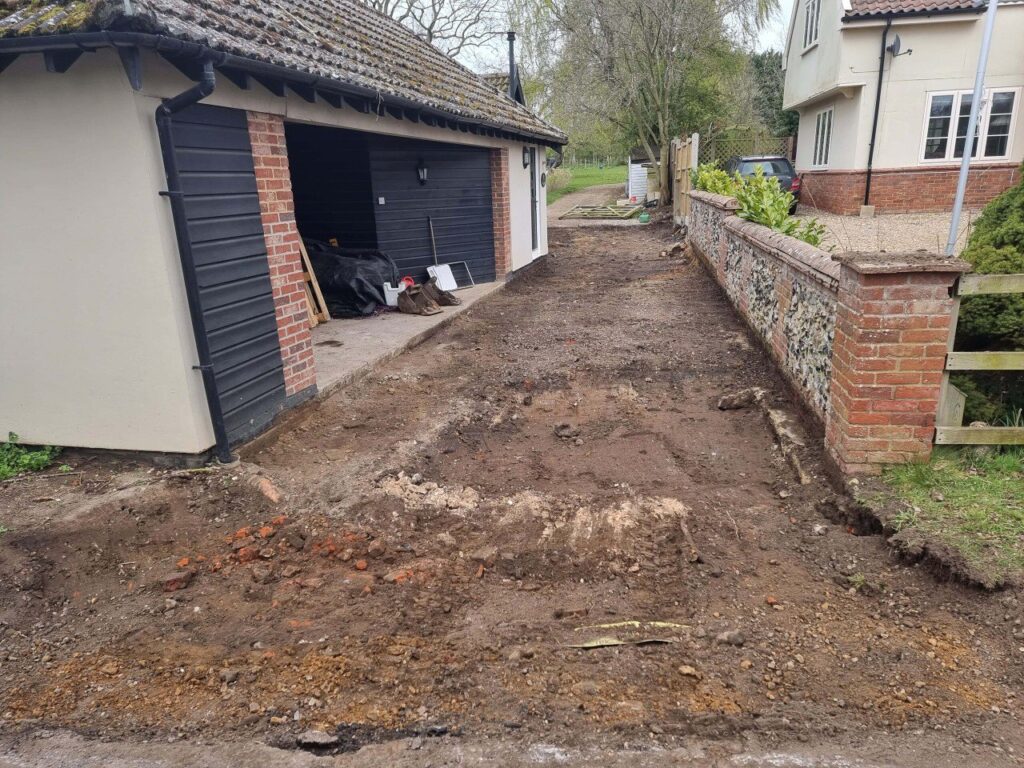Tarmac vs. Gravel for New Build Farm Roads: A Comparison
Introduction: Choosing the right surface material is crucial when constructing farm roads for new agricultural developments. Two common options are tarmac and gravel, each with its own set of advantages and considerations. New Romney Driveways will compare tarmac and gravel for newly built farm roads in this blog post, helping you decide based on your specific needs.
- Tarmac for Farm Roads:
1. Durability: Tarmac is known for its durability and resistance to heavy loads. It can withstand the weight of tractors, trucks, and other agricultural machinery, making it a reliable choice for farm roads.
2. Smooth Surface: Tarmac provides a smooth and even surface, ensuring comfortable and stable driving conditions for farm equipment. This can reduce wear and tear on machinery and improve overall efficiency.
3. Low Maintenance: Tarmac requires minimal maintenance compared to gravel. Regular sweeping and occasional resealing are needed to keep the surface in good condition, reducing long-term maintenance costs.
4. Dust Control: Tarmac significantly reduces dust, which can be a nuisance on gravel roads. Dust control improves air quality, minimises the need for watering to suppress dust, and creates a more pleasant working environment.
5. All-Weather Surface: Tarmac performs well in all weather conditions, including wet and muddy conditions common on farms. It provides better traction and stability for vehicles, reducing the risk of accidents.
- Gravel for Farm Roads:
1. Cost-Effective: Gravel is generally more cost-effective to install than tarmac. It requires less initial investment, making it an attractive option for budget-conscious farmers.
2. Easy Repairs: Gravel is easier and more cost-effective to repair in case of damage. Filling in potholes or ruts is a straightforward process that can be done by farm staff.
3. Natural Drainage: Gravel allows for natural water drainage, reducing the risk of puddles and flooding during heavy rain. It can be particularly suitable for areas with poor drainage.
4. Farm Aesthetics: Some farmers prefer the rustic and traditional appearance of gravel roads, which can blend well with the rural landscape.
5. Flexibility: Gravel roads can be easily extended or altered as needed, providing flexibility for future farm layout or infrastructure changes.
Conclusion: The choice between tarmac and gravel for newly built farm roads ultimately depends on your priorities, budget, and specific requirements. Tarmac offers durability, low maintenance, and better all-weather performance, making it a solid choice for farms with heavy machinery and frequent traffic. On the other hand, gravel is cost-effective, easy to repair, and can be aesthetically appealing in certain settings.
Call us on: 01797 330 699
Click here to find out more about New Romney Driveways
Click here to complete our contact form and see how we can help with your driveway needs.

